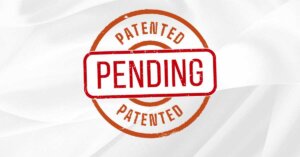When someone is successful to find an invention, it will be very appropriate if the invention can be immediately registered so that he can get the right to his invention. However, there are several things that must be known for an invention to be considered a patent, namely “A patent will be granted for an invention that is new, containing inventive steps, and applicable in industry” in accordance with Article 3 of Law no. 13 of 2016 regarding Patent.
Then, as a newbie, you will absolutely wonder how an invention can be considered novel or having a novelty value?
The invention is considered novel or having novelty value if it is not a part of the prior arts. In general, prior art refers to all matters relating to technical knowledge that are known by public anywhere before the date of the first filing of a patent application. This includes patent, patent application, and any kind of non-patent literature.
The definition of prior art differs from any country to another country. In many countries, any information that has been published to public anywhere in the world whether in written, oral or exhibition form is considered as a prior art. Thus, principally, the publication of an invention in a scientific journal, a presentation at a conference, commercial use, or an exhibition in a catalog is an action preventing the novelty of an invention and it affects the invention becomes non-patentable. Therefore, it is important for someone to register their invention before publishing the said invention to public.
The above brief explanation is in accordance with Article 5 of Law no. 13 of 2016 regarding Patent which regulates an invention can be categorized as a new invention or having novelty value.
Furthermore, if an invention has maintained its novelty value, when it can be deemed to have inventive value?
The invention is considered to have an inventive step if by considering the prior art, the invention is something that cannot be predicted by someone who is skilled in a certain technology. The unexpected requirement is intended to ensure that patent is only granted in relation to creative, inventive achievement, and not development that could easily be undertaken by someone with casual expertise in an existing product. This is regulated in Article 7 of Law no. 13 of 2016 regarding Patent.
Here are some examples of inventions that do not meet the requirements to have inventive steps, including: change in size only, make the product easy to carry, reverse parts, change in material, or replace with the same part or function only.
The last thing that needs to be considered so that an invention can be granted a patent is whether the patent can be applied in industry?
The invention must be applicable in industry or for business purposes not just a theoretical phenomenon. Thus, an invention must be useful and providing several practical advantages in accordance with Article 8 of Law no. 13 of 2016 regarding Patent.
Based on the explanation regarding the prerequisites for a patent to be granted, we should begin to realize that it is very important to keep novelty of invention. In addition, it is necessary to understand that inventions having been created must have creative value so that they are inventive and having economic value for being applicable in industry.
Post Views: 1





